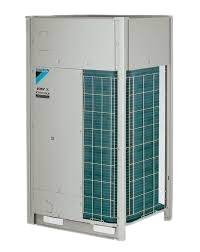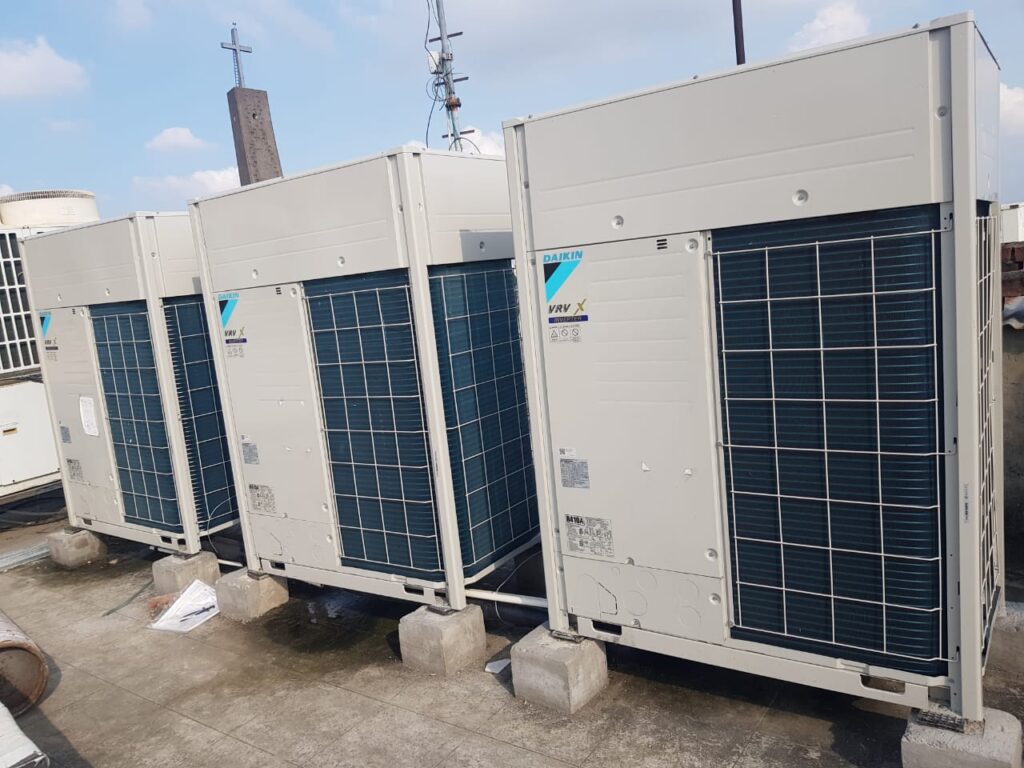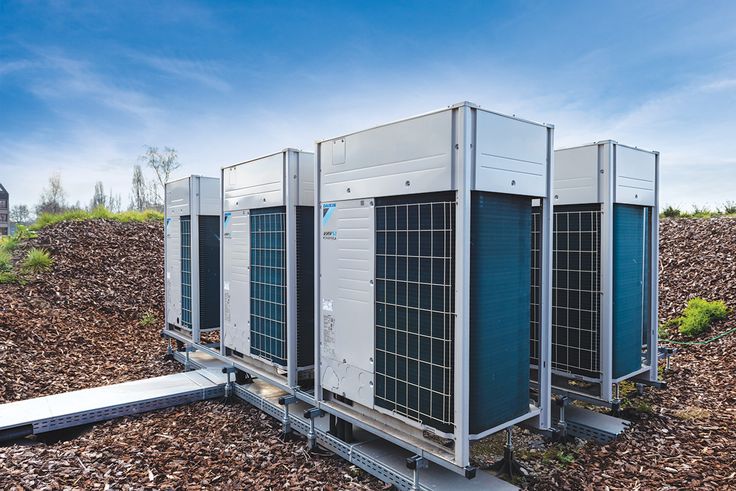How VRV AC Works – In Detail
1. Variable Refrigerant Control
How VRV AC Works :- Unlike conventional systems that work on a simple on/off principle, VRV AC systems vary the flow of refrigerant using an inverter-controlled compressor. The system senses how much cooling (or heating) is needed by each indoor unit and sends only the required amount of refrigerant.
- This minimizes energy wastage, making it highly efficient.
- The refrigerant flow can be modulated to each zone in real-time.

2. Multiple indoor units, one outdoor unit
One outdoor unit can connect to 8–64 indoor units (depending on system capacity). This allows:
- Independent control in each room.
- Quiet, flexible installation with minimal space requirements.
- Indoor units can be wall-mounted, ceiling cassette, ducted or floor-standing – mix and match as needed.
3. Zoned comfort
Each room or area (called a zone) is controlled by its own thermostat. This allows:
- Personalised temperature setting for each room.
- Unused rooms can have their indoor unit turned off to save energy.
- Precise comfort without overcooling.
4. Simultaneous Cooling and Heating (Heat Recovery Type)
In a heat recovery VRV system, one part of a building can be cooled while another is heated—at the same time.
- This is possible by using a branch selector unit (BS unit).
- It redistributes heat energy: for example, heat extracted from a server room can be used to heat another space.
Key Benefits of VRV/VRF AC Systems
| ✅ Features | 🔍 Description |
|---|---|
| Energy Efficient | Uses inverter compressor and dynamically adjusts refrigerant flow. |
| Scalable | Add or remove indoor units as your building grows. |
| Space-Saving | No ductwork needed; thin pipes connect units. |
| Long Piping Length | Pipes can extend up to 100-165 meters, providing flexibility in larger buildings. |
| Central and Local Control | Can be controlled by BMS (Building Management System) or individual remote controllers. |
| Auto Diagnosis | Many systems come with built-in fault detection systems. |
Where VRV Systems Are Commonly Used
- Hotels – Guests can self-regulate their room temperature.
- Office Buildings – Different departments may have different needs.
- Large Homes/Villas – For luxury, comfort and energy control.
- Schools & Colleges – Independent control in classrooms.
- Shopping Malls – Multiple zones with different cooling loads.
Comparison: VRV AC vs Conventional Split AC
| Features | VRV AC | Split AC |
|---|---|---|
| Energy Efficiency | High | Medium |
| Initial Cost | Higher | Lower |
| Number of Indoor Units | Upto 64 | Typically 1 per Outdoor Unit |
| Zone Control | Yes | No |
| Suitable For | Large Buildings | Small Rooms |
5. VRV System Architecture
The VRV system architecture is modular and scalable, designed for both small and large buildings.
Basic Components:
- Outdoor Unit (ODU): Contains the inverter compressor and is the central part of the system.
- Indoor Unit (IDU): Can be ducted or non-ducted (wall, cassette, floor-mounted).
- Refrigerant Piping: Copper piping network connects the ODU to multiple IDUs.
- Branch Selector Unit (for heat recovery models): This controls whether each zone receives cooling or heating.
- Controller: Wired or wireless remote controller, centralized building controller or BMS integration.
6. Operating Modes of VRV Systems
A. Cooling Only System
- Provides cooling to all connected indoor units.
- Used in hot climate areas or server rooms.
B. Heat Pump System
- Provides either cooling or heating, but not both at the same time.
- Ideal for spaces with similar temperature needs.
C. Heat Recovery System
- Allows simultaneous cooling and heating in different zones.
- Perfect for hotels, hospitals, or buildings where rooms have different needs.
7. Smart Control and Automation
VRV systems are extremely intelligent. Some of the advanced control options include:
| Control Type | Features |
|---|---|
| Local Controller | Control individual units via remote or wall mounted panel. |
| Central Controller | Manage all indoor units from a central location. |
| Building Management System (BMS) | Integrates HVAC with lighting, access, fire alarms. |
| Mobile/Web App | Remote monitoring and scheduling of AC usage. |
8. Technical Features and Innovations
- Inverter Technology: Reduces power consumption by adjusting compressor speed.
- Energy Recovery: Transfers heat energy between rooms in HR (Heat Recovery) systems.
- Auto Diagnostics: Detects system errors and alerts maintenance teams.
- Long Piping Runs: Up to 165 m of vertical piping and 1000 m of total piping is possible.
- Wide Operating Range: Operates in extreme weather (-5°C to 52°C).
9. Maintenance & Service
VRV systems are designed to be low maintenance, but regular checks ensure optimum performance.
Maintenance Checklist:
- Cleaning filters every 1-3 months.
- Checking for refrigerant leaks.
- Tightening electrical connections.
- Cleaning outdoor unit coils.
- Software updates for smart control.
10. VRV vs Central Chiller Plant
| Feature | VRV System | Chiller Plant System |
|---|---|---|
| Installation Time | Fast | Slow (Centralised Setup) |
| Efficiency | High (Zone-wise Control) | Medium to High |
| Space Required | Compact | Plant Room Required |
| Zoning Flexibility | Excellent | Limited |
| Initial Cost | Medium to High | High |
11. Real World Use Cases
- IT Companies – 24×7 cooling required in server rooms and comfort in offices.
- Hotels – Different rooms have different comfort requirements.
- Hospitals – Silent operation, precise climate control for operation theatres and wards.
- Luxury Homes – Silent, efficient cooling with low visual impact.


